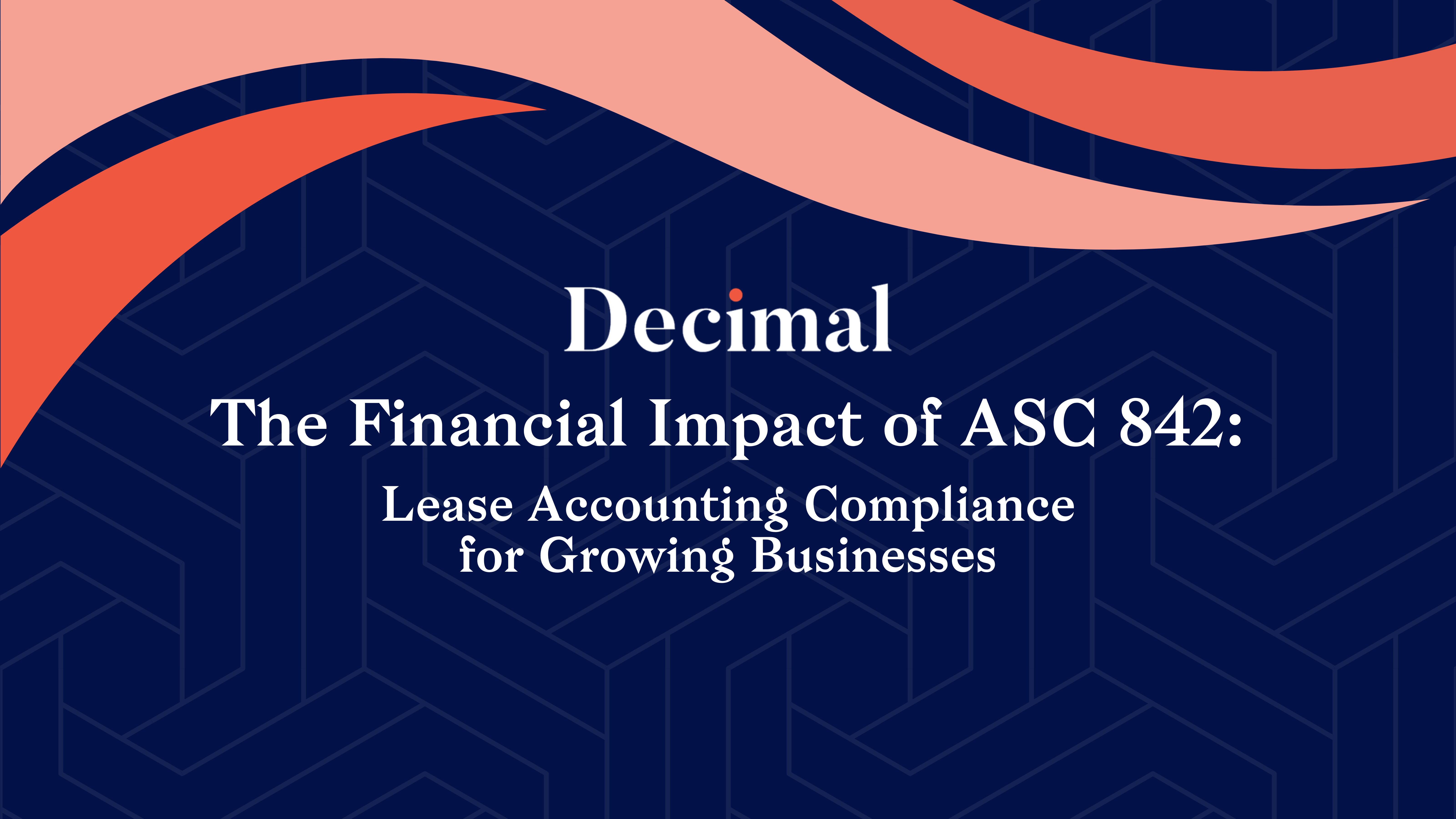The Financial Impact of ASC 842: Lease Accounting Compliance for Growing Businesses
What Is ASC 842?
ASC 842 governs how companies classify, account for, and disclose lease agreements. Under the previous standard, ASC 840, companies reported operating leases as footnotes in financial statements without recognizing them as liabilities. ASC 842 eliminates that distinction by requiring businesses to record all leases longer than 12 months as both a right-of-use (ROU) asset and a corresponding lease liability on the balance sheet.
This change enhances comparability and transparency but introduces new complexities in accounting for leases.
Who Needs to Comply with ASC 842?
All public and private companies that follow US Generally Accepted Accounting Principles (GAAP) must comply with ASC 842. While public companies adopted the standard earlier, private companies and nonprofits faced deadlines that required compliance for fiscal years beginning after December 15, 2021. Any business entering lease agreements for property, equipment, or vehicles now falls under the requirements of ASC 842.
How ASC 842 Changes Lease Accounting
Under ASC 842, businesses must identify whether a contract contains a lease, then determine whether it qualifies as a finance or operating lease. Regardless of classification, both types now appear on the balance sheet.
Finance leases resemble capital leases and include criteria such as transfer of ownership, purchase options, and lease terms covering most of the asset’s useful life.
Operating leases still involve the use of an asset without ownership transfer, but under ASC 842, they require balance sheet recognition, unlike under ASC 840.
Each lease will now result in:
- A right-of-use asset that represents the business’s right to use the leased item
- A lease liability that represents the obligation to make lease payments
The recognition of these amounts depends on calculating the present value of future lease payments using a discount rate, typically the incremental borrowing rate or the rate implicit in the lease.
Financial and Operational Impact
The implementation of ASC 842 affects more than accounting entries. It influences a variety of financial and operational processes:
1. Balance sheet expansion - Bringing leases onto the balance sheet increases reported liabilities and assets, which may affect debt covenants, credit ratings, and financial ratios.
2. Income statement changes - For finance leases, interest and amortization expenses replace straight-line rent expense. For operating leases, expense recognition remains straight-line, but the underlying balance sheet impact changes.
3. Data and documentation requirements - ASC 842 demands a centralized, organized system for tracking lease contracts, terms, payment schedules, renewal options, and discount rates.
4. Internal controls and audit readiness - Compliance requires updated processes, documentation, and internal controls to support reporting accuracy and audit reviews.
5. Strategic lease decisions - Companies may reevaluate leasing strategies to manage balance sheet exposure or negotiate more favorable terms. Understanding the full impact of each lease supports smarter decisions at contract negotiation.
Steps to Achieve and Maintain Compliance
To align your accounting and reporting processes with ASC 842, follow these key steps:
1. Identify all applicable leases - Inventory every lease agreement across departments and subsidiaries. This includes real estate, equipment, IT hardware, and vehicles.
2. Extract and validate lease terms - Review lease documents to capture details such as start and end dates, renewal clauses, escalation clauses, and payment amounts.
3. Classify leases appropriately - Determine whether each lease qualifies as a finance or operating lease under ASC 842 criteria.
4. Calculate the lease liability and ROU asset - Use present value calculations to determine the value of lease obligations and assets. Apply a consistent discount rate policy.
5. Update accounting systems - Use software capable of tracking leases, automating amortization schedules, and integrating with your general ledger. Manual tracking in spreadsheets can introduce unnecessary risk.
6. Review policies and internal controls - Update accounting policies and documentation to reflect ASC 842 practices. Implement controls to ensure leases are identified, reviewed, and recorded correctly going forward.
Key Considerations for Bookkeepers and Finance Professionals
For bookkeepers, ASC 842 introduces the need to manage more complex journal entries and lease schedules. For finance teams, it affects budgeting, forecasting, and financial analysis. Together, these teams must work cross-functionally to:
- Ensure lease agreements are properly accounted for
- Maintain up-to-date lease schedules and reconciliations
- Provide leadership with timely insights into lease impacts on financial metrics
Ongoing compliance requires consistent attention to new lease agreements, renewals, terminations, and modifications.
Conclusion
ASC 842 brings lease obligations into full view and pushes businesses to adopt more structured, data-driven accounting processes. While the standard introduces complexity, it also offers an opportunity to improve financial transparency and make more informed leasing decisions. For growing businesses, proactive implementation ensures compliance today and positions you for stronger reporting tomorrow.
If you’re looking for expert guidance to simplify your tax filing process, schedule a time with a Decimal expert at https://www.decimal.com/contact-us
Getting started in days.
Ready to simplify your accounting? Schedule a call with our team and explore your options. We’d love to hear from you!

